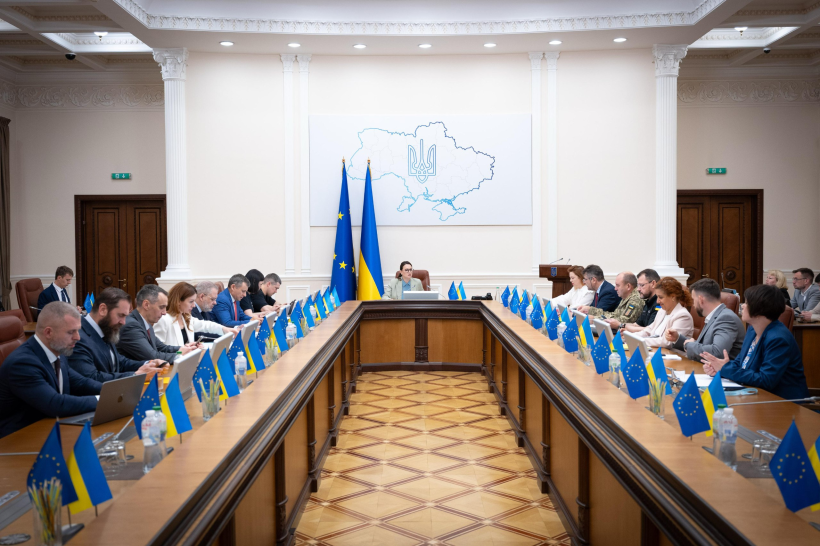Ukraine Launches EU Screening on Transport Policy and Trans-European Networks
Вступ України до ЄС
24.06.2025
On Tuesday, June 24, 2025, a four-day bilateral meeting between the Ukrainian delegation and the European Commission began in Brussels, Belgium, as part of the official screening of Ukraine’s legislation for compliance with the EU acquis under Chapter 14 “Transport Policy” and Chapter 21 “Trans-European Networks” (TEN-T). The screening covers key sectors of the transport domain: road, rail, air and maritime transport, as well as safety, digitalisation, infrastructure management, passenger rights, and Ukraine’s integration into the TEN-T network.
Ukraine’s progress is being presented by First Deputy Minister for Communities and Territories Development of Ukraine Alyona Shkrum, Deputy Ministers Serhii Derkach, Andrii Kashuba, and Oleksii Balesta, Head of the State Aviation Administration of Ukraine Oleksandr Bilchuk, Deputy Head of the State Agency for Restoration and Infrastructure Development for Digital Development Roman Komendant, First Deputy Head of the Patrol Police Department Oleksii Biloshytskyi, Head of the Air Navigation Department of the State Aviation Administration Alina Zadorozhna, as well as representatives from the Ministry of Economy, the State Aviation Administration, the National Bureau for Transport Safety Investigation, and others.
During the meeting, the Ukrainian delegation emphasised that transport legislation is among the most complex in the EU acquis, as it requires extensive regulatory alignment across rail, road, air, and maritime sectors, and the establishment of strong institutions and infrastructure. Despite serious challenges caused by the war, Ukraine demonstrates strong determination to move forward.
A number of key draft laws have already been registered in the Ukrainian Parliament, including those regulating the railway transport market, inland waterway navigation, carriage of dangerous goods, vehicle technical inspections, and driver licensing.
The Ukrainian side stressed that Ukraine’s integration into the core and comprehensive TEN-T networks is not only a technical priority but a geopolitical necessity to unlock the country’s full potential as a key EU transit corridor. Ukraine is seeking greater participation in EU transport initiatives, including the Connecting Europe Facility (CEF), technical working groups within the Transport Community Treaty (TCT), the European Union Agency for Railways (ERA), the European Union Aviation Safety Agency (EASA), the European Maritime Safety Agency (EMSA), the European Network of Civil Aviation Safety Investigation Authorities (ENCASIA), and TEN-T platforms. Ukraine hopes for the European Commission’s support in granting observer status or pilot participation in these platforms as part of a gradual and accelerated integration policy.
Ukraine also highlighted the importance of establishing independent regulatory authorities, including a National Transport Regulatory Commission, a Railway Safety Agency, and an independent transport accident investigation body, which are crucial to ensuring transparency, competition, and safety in the sector.
In the aviation sector, particular attention was paid to the certification of Ukrainian aviation industry products in line with EASA standards. The Ukrainian side proposed the creation of a joint working group to develop a roadmap for adapting the aviation sector to EU Regulation No. 2018/1139, considering the specific characteristics of the Ukrainian market and the need for transitional periods.
The meetings, which will continue until June 27, will outline the next steps Ukraine must take to achieve full compliance with EU law under Chapters 14 and 21, marking another step towards the country’s strategic goal of EU membership.
Background
Chapters 14 “Transport Policy” and 21 “Trans-European Networks” fall under Cluster 4 “Green Agenda and Sustainable Connectivity.” The legislation under these chapters aims to establish a unified and efficient transport area through the development of TEN-T infrastructure corridors, particularly within the framework of the Connecting Europe Facility (CEF).
Other news
All news













